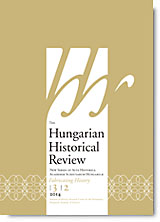
Abolish the Past Once and for All. A kommunista aszketizmus esztétikája [The Aesthetic of Communist Asceticism]. By Dávid Szolláth. Reviewed by Tamás Kisantal Tudomány és ideológia között. Tanulmányok az 1945 utáni történetírás történetéről [Between Scholarship and Ideology. Essays on the History of the post-1945 Historiography]. By Vilmos Erős and Ádám Takács. Reviewed by Anna Birkás The Holocaust in Hungary: Evolution of a Genocide. By Zoltán Vági, László Csősz, and Gábor Kádár. Reviewed by Ferenc Laczó Gendered Artistic Positions and Social Voices: Politics, Cinema and the Visual Arts in State-Socialist and Post-Socialist Hungary. By Beata Hock. Reviewed by Péter Apor Vezércsel. Kádár János mindennapjai [King’s Gambit. The Everyday Life of János Kádár]. By György Majtényi. Reviewed by Tibor Takács Politikai rendőrség a Rákosi-korszakban [Political Police in the Rákosi Era]. By Rolf Müller. Reviewed by Éva Tulipán Trianon Again and Again. Rozpad Uhorska a Trianonská mierová zmluva. K politikám pamäti na Slovensku a v Maďarsku. [The Disintegration of Historical Hungary and the Trianon Peace Treaty. Politics of Memory in Slovakia and Hungary.] Edited by Miroslav Michela and László Vörös. Bratislava: Reviewed by Csaba Zahorán Rozpad Uhorska a Trianonská mierová zmluva. K politikám pamäti na Slovensku a v Maďarsku. [The Disintegration of Historical Hungary and the Trianon Peace Treaty. Politics of Memory in Slovakia and Hungary.] Edited by Miroslav Michela and László Vörös. Bratislava: Reviewed by Adam Hudek
More...
Keywords: masochism; sadism; woman; proper name; pseudonym; confession; Wanda and Leopold von Sacher-Masoch; Krat-Ebing; Marko Ristić
This paper deals with the autobiography of Wanda von Sacher-Masoch, notorious masochistic heroine, who spent ten years in a marriage with Leopold von Sacher-Masoch, the “father of literary masochism”. The necessary context for this research is provided by Krat -Ebing’s medico-forensic study Psychopathia sexualis, Leopold von Sacher-Masoch’s masochistic novel Venus in Furs, Deleuze’s “gynocentric” (re)vision of masochism and Foucault’s analyses of the discursive history of sexuality in western “confessing” societies. h e specii c issues of proper name, truth, privacy and identity involved, in the case of Wanda von Sacher-Masoch’s Confessions are related to the characteristic features of the specii cally women’s experience of writing. Thus, I analyse her “confessional pseudonym” as a double i ction that suggests the ambivalence of establishing female identity at the crossroads of literary i ction and i ction of the social institution of marriage. (Inter)textual strategies of Wanda von Sacher-Masoch’s autobiography are organized as a female counterpoint to Sacher-Masoch’s masochistic lifestyle and narrative, but also as a counterpoint to her own previous “masochistic authorship” under the pseudonym of the heroine of Sacher-Masoch’s Venus in Furs - Wanda von Dunajew. In her late autobiographical Confessions Wanda von Sacher-Masoch tells the masochistic story not as a i ction but as a pressure of i ction on the real life and demystifies male masochistic fantasy as oppressive and restrictive. Different status and value of authorship and statements in the autobiography as a documentary genre allows Wanda von Sacher-Masoch to strengthen privacy and daily life as political spheres, which sets her text in a dynamic relationship with the social environment and feminist movement of the time. Yet, for the same reasons her anti-masochistic autobiographical work may be perceived as still masochistic, based on the conservative, truth-seeking, mimetic genre that conforms to the relational dei nition of woman’s identity.
More...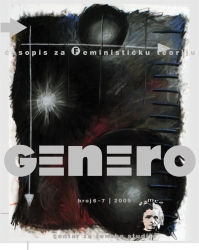
Keywords: gender; geography of identity; feminist criticism;
Article about gender and identity.
More...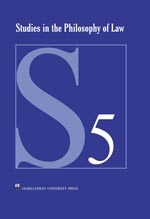
Keywords: law; philosophy of law; law and biology; biojurisprudence; legal ethics;
Genetics is often viewed as a potential medical savior not just through personalized medicine in the developed world, but also by applying genetic technology in the resource-poor world. But there is a dark side to genetics that often escapes attention. This dark side reached its depths in Auschwitz, where Foucault’s biopolitics, the government’s power to make live, intersected with the government’s historical power to make die. The fundamental division was seen as between people and populations in which, as Giorgio Agamben has noted, a political body is transformed into a biological body whose entire life, from birth to death, must be regulated. The 1933 Nuremberg laws “on the protection of the hereditary health of the German people,” Agamben notes, “marks the caesura perfectly... citizens of Aryan descent are distinguished from those of non-Aryan descent... [deploying] a new biopolitics of racism.”
More...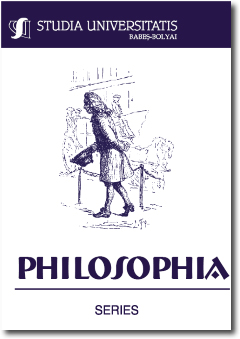
Keywords: rule of law; justice; rhetoric; post-communism; transition; democracy.
We propose hereafter an analysis of the way in which the postcommunism has determined the significance of justice and, in doing so, pretended to reorganize the possibility for a legitimate political community. Given that the public perception points out to a gap between the rule of law and justice, one should understand for what reasons. Does the rule of law have the resources for doing justice? Are the legal procedures enough? Or should we take into consideration the possibility that the rule of law is unable to do justice? Subsequently, we identify and discuss three radicalizations: the issue of normativity, the rogue state and the heterogeneity between law and justice. Ultimately, the possibility of justice depends on a different way of thinking democracy.
More...A few months before the November 1989 collapse of "real eXIstIng socialism" in Central and Eastern Europe, Habermas reflected on the revolutionary ideas of 1789. How is one to think within plural and secular modernity about a radical democratic republic? He notes the paradox of post-traditional ethical self-realization and moral self-determination: social revolutions project contents and forms that in a finite way transcend the revolutionary action, but revolution shipwrecks before the project gets off the ground. He proposes that to overcome the "sorrow" and the "melancholy" of projected revolutionary possibility, one must form posttraditional identities in those life-forms which are nurtured by a "permanent and everyday-becoming revolution. “
More...Keywords: photojournalism – digitization – indexicality – multimedia journalism – decontextualisation – recontextualisation – double indexicality – credibility – realism and post-realism
By the end of the second half of the 1990s the analogue photography was in practice of journalism definitively replaced by the digital photography. Enthusiasm, originally aroused by numerous advantages which digitization brought to photojournalism, soon subsided due to many cases of misuse of digital technology and its easy manipulability by journalists and editors. Ethically questionable interventions into the content of photographs have been perceived as extremely serious and dangerous and according to many reactions have led to the fatal breach of trust in the truthfulness of photography, some critics have even seen them as the cause of the end of photography and the death of photojournalism. I do not intend to argue that manipulations disrupting the direct indexical connection between the photography and its referent are unproblematic and of no consequence. However, the reflections on the death of photojournalism have been overly focused on this issue which has on the one hand overshadowed the fact that there are other, more cunning ways of lying by means of photography and has on the other hand resulted in overlooking that however much the digitization has threatened the credibility of journalism, it has also brought possibilities of its strengthening. In order to see the digitization as a means of increasing the credibility of photojournalism it is important to be able to abandon to certain extent the assumptions and expectations of the photo-realist paradigm and embrace the epistemic challenges of post-realist paradigm. The following paper attempts to identify, conceptualize and on some new trends illustrate this paradigmatic shift in photojournalism.
More...Keywords: globalization; human condition; information civilization; theoretical approaches; pluralism
An event series marks the end of the second millennium and the arrival of a new era. The world became open and chaotic, it no longer is a clock mechanism. The existing theories doesn’t detect completely the nature of the globalization and its consequences. They apprehended the human condition in a fragmentary manner, each concentrating on the politics, the economics, the society, the culture. The optimists approaches were accompanied by of others, pessimistic. Their difficulties are at once ontologiques, epistémologiques, phenomenological... Despite all their pieces of information, one does not know what we arrive. The globalization is a movement influencing all the aspects of human life, all the regions of the world. The civilization prohibitionist a condition that allows the concomitant production of the strength, wealth, social, cultural interaction, innovation. The union of a vision of the world and of a historic system that produces a value body can be born a civilization. A society built around information produces more liberty and equality, things that people value more in a modern democracy. The relation between individuals, liberties, society and solidarity within the system that generates the complex life of today, needs the art to equilibrate "the eternal yesterday" and "the eternal tomorrow", globalization and pluralism. Our world vilage will not be able to survive if we don't learn to live together and to drop the high barriers around us. Globalization has launched challenges and demands responses. In fact, any new era brings fear and hope... Globalization offers possibilities and dangers, opportunities nd threats, and the people must take courage to reveal them.
More...Keywords: animation; postcolonialism
The aim of this article is to examine selected Estonian animated films of the 1980s as wider cultural signs of the Soviet era in Estonia, using the methodological aid of generative terms borrowed from the interdisciplinary research field of post-colonialism. The examples here are one of Priit Pärn's most celebrated films, 'Luncheon on the Gras' (1987), and Rein Raamat's 'Big Tõll' (1980, artist Jüri Arrak) - animated films with a serious political undertone.
More...The application of knowledge to itself· the disenchantment of scientific knowledge. The application of Marxism to a working-class philosopher: the suppression of uneducated thinking from below through learned discourse from above. Karl Marx: Prologue on Weitling's "ignorance". Erns! Theodor Mohl: Epilogue on Weitling's "utopianism". The application of Freudian knowledge to learned thought: the disclosure of discourse censorship.
More...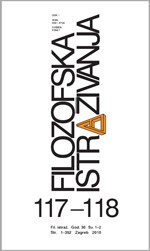
Keywords: philosophy of science; psychotherapy; history of psychology; philosophical counseling; concept analysis
This philosophical analysis of psychotherapeutic approaches is based upon thesis of scientific character of one’s philosophy of life. Notion of philosophy of life is present in each major psychotherapeutic approach, in either explicit or implicit matter. Modes of philosophical inquiry include historical and concept analysis, two factor model of ontological-epistemological space, social networks in the philosophical schools and their impact on the history of psychology, and some specific issues in the philosophy of science. Finally, philosophical counseling movement is examined. What is typical for this movement and what sort of connections does it have with psychotherapy is covered.
More..."I am happy to accept the editors' invitation to respond to the articles by Richard Rorty, Martin Jay, Thomas McCarthy, and Joel Whitebook."
More...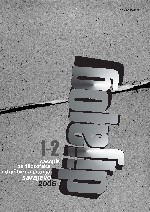
The question whether a universal principle of solidarity is possible within cultural differences or contexts, or invariably determined in particularist fashion, by local cultural discourse, is still topical and active in moral philosophy. Here the question is posed in a restricted perspective: to what extent did the very mechanism of torture or violence create a certain consciousness of solidarity between members of the community who were excluded from the community by such torture, or even included in two different ideological projects – that of communism and that of nationalism – in the former Yugoslavia? There are two different modes of exclusion or inclusion associated with the idea of solidarity in the historical memory of inherited cultural patterns. One is based on the cannibalistic “swallowing” one’s enemies, interiorizing them, or annihilating their difference within one’s own cultural identity; the other, on “vomiting up” the digested enemy, rejecting or removing him. The question whether solidarity is something that belongs to a universal project, or whether it is invariably associated with a particularist context, in fact corresponds to a consideration of the difference between the modes of “exclusion and inclusion” in the form of torture as between communism and nationalism. In this context, it may be phrased still more specifically: on the one hand, how was the international project of communism, while creating an awareness of universal affiliation to the struggle to liberate the proletariat, marked – by means of the techniques of torture used in Goli otok, where adherents of Stalinist socialist “internationalism” were imprisoned – by a process of interiorization, inclusion or assimilation; and on the other, in what way was the ethnonationalist project that finally, in the 1990s, rent apart the Yugoslav unity by means of ethnic cleansing and the elimination and liquidation of the other and different, marked by the technique of exclusion, of “vomiting up,” of the removal of one’s own enemy?
More...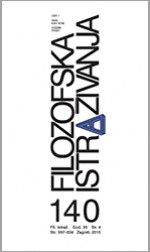
14. Lošinjski dani bioetike Studentska bioetička radionica »Scenariji budućnosti« 5. Studentski filozofski simpozij »Društvo, jezik, mit« Skup »Perspektive i ključni problemi sintetičke biologije« Konferencija »Misliti s onu stranu kapitalizma« Predavanje Pave Barišića »Deliberativna demokracija i Aristotelovi argumenti o rasudnoj snazi mnoštva« 10. međunarodni tečaj Filozofija i demokracija na temu »Kozmopolitska demokracija« Internacionalni i interdisciplinarni kongres Suvremenost, svjesnost, etika, psihoterapija 24. Dani Frane Petrića, simpozij »Zdravlje i kultura« Simpozij »Bioetika u budućnosti: tehnicizacija čovjeka ili humanizacija znanosti?« 24. Dani Frane Petrića, simpozij »S Petrićem u žarištu: hrvatski filozofi u europskom kontekstu« Predstavljanje knjige Estetska terminologija Predraga Fincija 3. Znanstveni inkubator Gostovanje Jacquesa Rancièrea u Zagrebu 1.Regionalni studentski simpozij »Kritičko mišljenje« i 2. Regionalni studentski simpozij »Humanizam u doba neoliberalnog kapitalizma« Predstavljanje digitalnog arhiva časopisa Praxis i Korčulanske ljetne škole Intenzivni bioetički kurs u Zürichu Okrugli stolovi Tjedna Svjetskog saveza mladih 2015. Simpozij »Biopolitika i transformacija kulture: filozofija – demokracija – slika« Simpozij »Rat i mir« Simpozij »Slika i anti-slika. Julije Knifer i problem reprezentacije« Tribina »Bioetika: Pitanja života i smrti« Tribina »Životinjski život i ljudski zakoni« Simpozij »Kultura – jedno i mnoštvo«
More...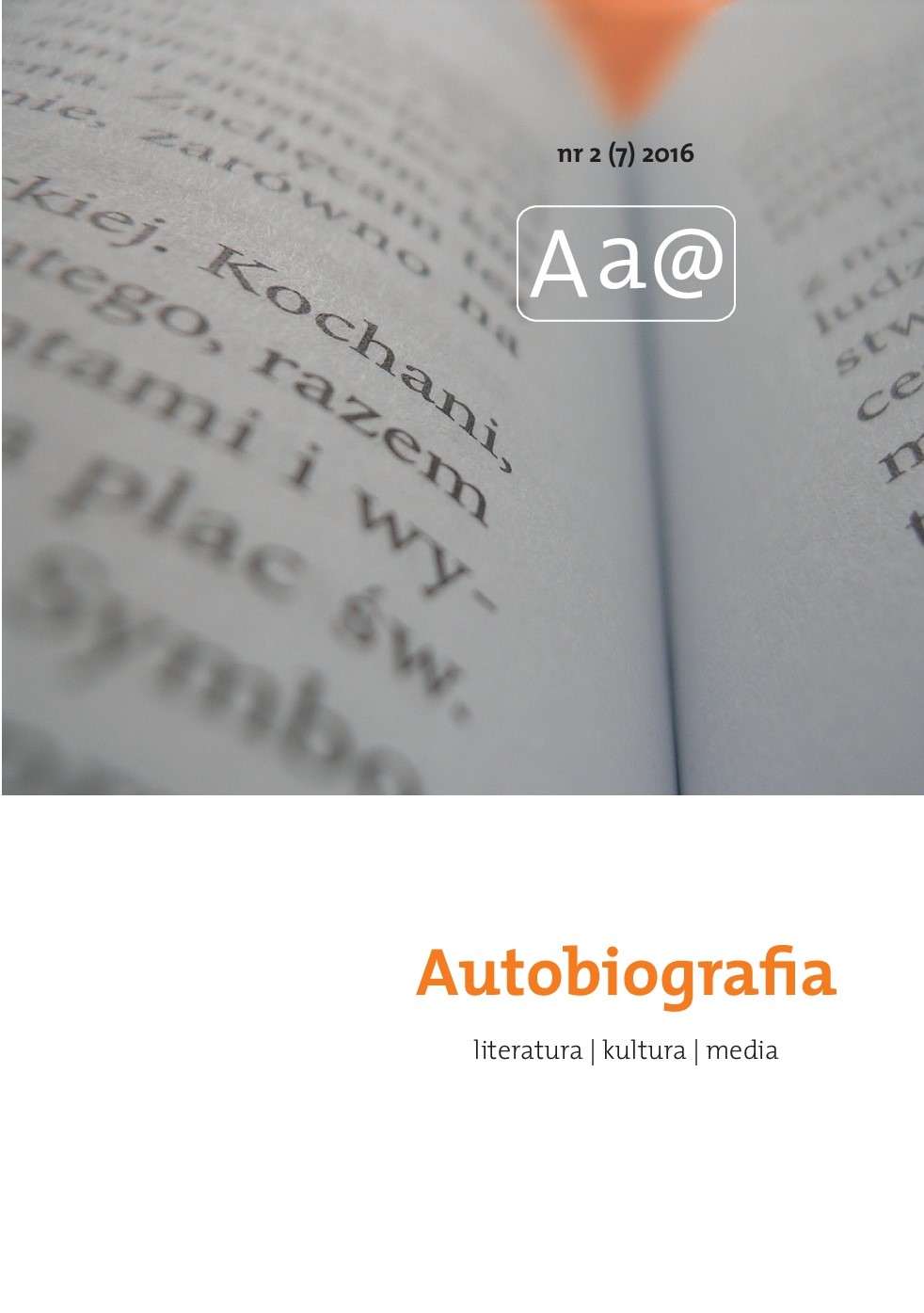
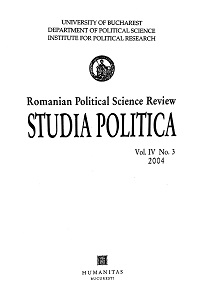
Silvia Marton - THIERRY CHOPIN, La République „une et divisible".Les fondements de la Fédération américaine, préface de PIERRE ROSANVALLON, Plon/Commentaire, Paris, 2002; Alexandra Ionescu - SANDRINE KOTT, Le communisme au quotidien. Les entreprises d’État dans la société est-allemande, Belin, coll. „Socio-Histoires", Paris, 2001; Lucia Dragomir - DANLUNGU, Construcția identității într-o societate totalitară. O cercetare sociologică asupra scriitorilor, Editura Junimea, Iași, 2003; Damiana Oțoiu - CLAUDE RIVIÈRE, Anthropologie politique, Armand Colin, Coll. «Cursus - Sociologie», Paris, 2000; Cristian Preda - ION ILIESCU în dialog cu VLADIMIR TISMĂNEANU, Marele șoc din finalul unui secol scurt, Editura Enciclopedică, București, 2004; Oana-Valentina Suciu - DUMITRU SANDU, Sociabilitatea în spațiul dezvoltării, Polirom, Iași, 2003; Andrei Niculescu - MIHAI COMAN,Mass-media în Romania postcomunistă, Polirom, col. „Collegium", Iași, 2003; Andrei Niculescu - MIHAI COMAN, Mass-media, mit și ritual. O perspectivă antropologică, Polirom, col. „Sociologie. Antropologie. Cercetări și eseuri", Iași, 2003; Ionela Băluță - ELVIRA-ECATERINAIVĂNESCU, Societatea ortodoxă națională a femeilor române (1910-1948,1990-2001), Editura Universitară Craiova, Craiova, 2001;
More...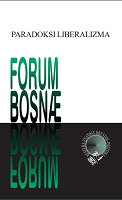
Keywords: liberalism; post-liberalism; individuality; autonomy; individualism;
The question of liberalism has become a vexed one over recent decades, with many contemporary theorists preferring to opt for some form of what they term post-liberalism, marking in this way the insoluble nature of the internal contradictions of the liberal stance in a post-modern, post-naïve, but also post-cynical, and fundamentally reflexive age – an age of complexity. The ideals of individualism and autonomy seem naïve and ideological, as everything resolves into connectivity and relatedness and theories take on the aspect of narratives of emergence. The concept of the individual once referred to monadic being, being that could not be divided further (this is the literal meaning of atom, while monad comes from the Greek monas, which means one or unitary). As the eighteenth and nineteenth centuries transitioned from a metaphorology based upon the breath of life to one based upon masks, roles, and performativity, however, the term “individual” came to be used for the soul after it had undergone processes of de-transcendentalisation and introjective internalization (immanentization). The individual was transposed from an essentially homogeneous unit of the shared substrate common to each and every human being, the spark of the divine within us, into the infinite, infinitely valuable, and unique person (literally the theatrical mask through which the voice resonates, the persona). The individual thus became a unique source of action based upon the idea of personhood and subjectivity, as crystallised in the concept of autonomy or self-determination. There is, however, necessarily an infinite number of such unique sources, themselves overdetermined by structures of external influence or heteronomies, mediated through webs of intersubjective intentionality and semiotic structuration. These structuring structures are not externally existing realities, but an implied hinterland of acts of semiosis that are themselves dependent on external symbolic anchors, which act as intersubjective foci for the coordination of meaning. Each of these imaginary complexes is fundamentally incoherent, based upon complex and cross-cutting metaphorologies and each of them is constantly being shored up against collapse back into the imaginary soup from which they have been raised. The figures (metaphorical complexes) that emerge take on a claim to individuality and autonomy through self-differentiation from their context – they become systemically distinct for a while. The appearance of individuality and autonomy are thus fragile achievements that depend on systemic features, which give them substance but are always subject to deformation, the laws of unintended consequence and perverse effects, and so to collapsing under their weight. These are the constitutive antinomies of Liberalism. In what follows, we will look at some of the implications of this claim.
More...